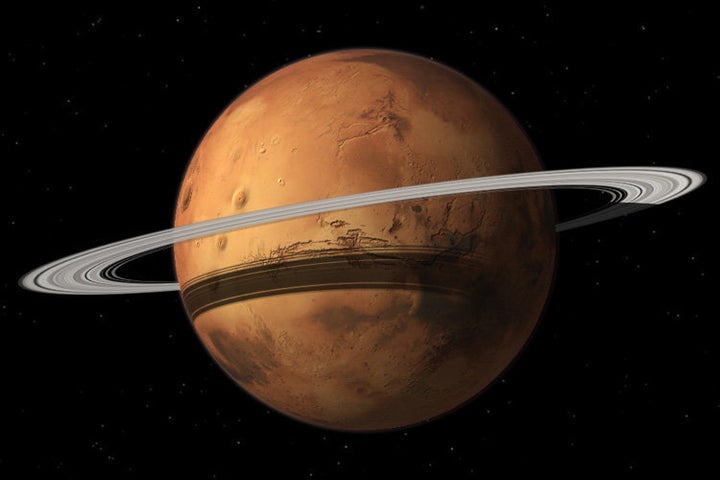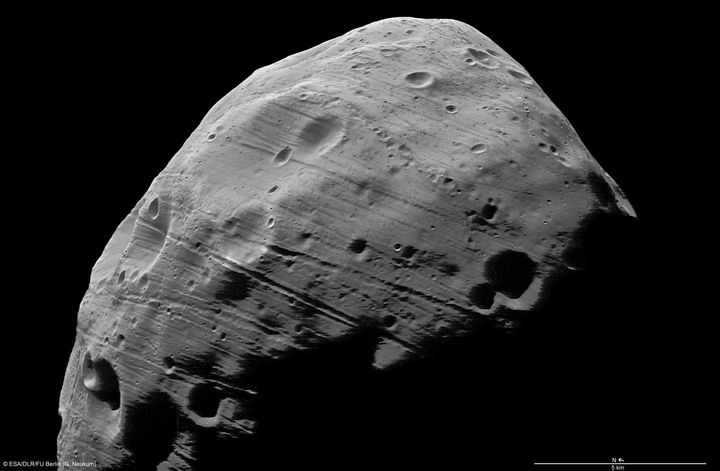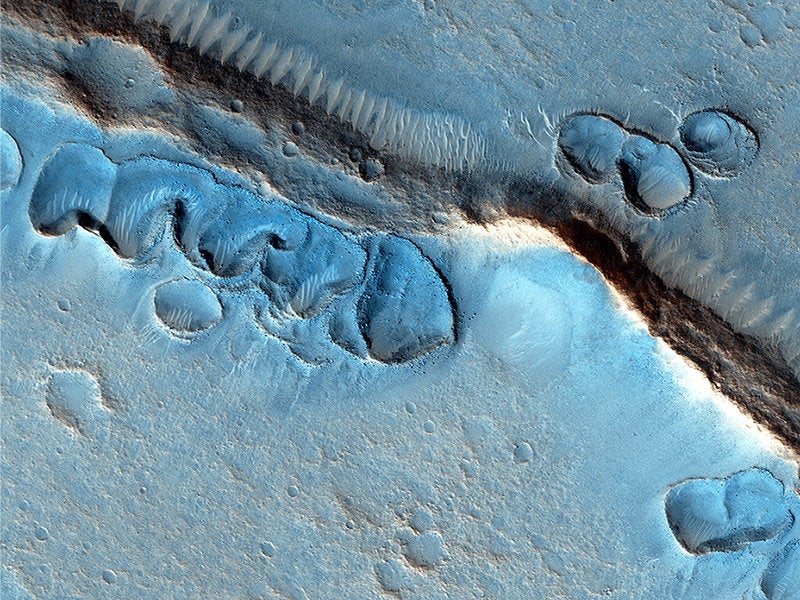
Mars may take on a very Saturn-like look in the future.
The red planet's largest moon, Phobos, has an inward-moving orbit that is sending it on a destructive path toward Mars' strong gravitational grasp. This could cause the moon to break apart and disintegrate into a planetary ring some 20 million to 40 million years from now, according to a study published Monday in the journal Nature Geoscience.
"This research tells us both about how the Martian system may change in the future, and about the processes that might have affected any other inwardly migrating moons that self-destructed in our solar system's past," Dr. Benjamin Black, a postdoctoral researcher at the University of California, Berkeley and a co-author of the new study, told The Huffington Post.
Black and his colleague Tushar Mittal, a graduate student at the university, used a combination of simulations and models to analyze how Phobos' orbit may evolve. They took a close look at the physical stresses Mars exerts on Phobos as the moon's orbit causes it to gradually veer inward.
Phobos is a delicate moon with lots of pores and rubble on its surface, which researchers say could contribute to it eventually crumbling to pieces under the red planet's powerful gravitational pull. These fragmented pieces would then orbit Mars, forming a planetary ring.

The destruction of a planet's moon or another passing object, such as an asteroid or comet, is one of the most common ways in which planetary ring systems form.
Saturn's rings may have formed in a similar way, and some scientists speculate that Neptune’s moon Triton might be falling apart currently, causing it to reach the same doomed fate, Nature magazine reported.
The researchers noted that our own moon is slowly moving away from Earth, so it likely won't be torn apart by the planet's gravitational forces -- and it's unlikely that our moon would be impacted by something large enough to cause it to break into pieces, Mittal said.
"The research highlights the multiple processes involved in planetary evolution, and reminds us that although the planets were formed a long time ago, they can still undergo significant changes over a reasonably short time, with respect to astronomical timescales," he said.
Dr. Zoe Leinhardt, an astrophysicist at the University of Bristol in England who was not involved in the study, told USA Today she agrees that it's likely Phobos will one day become a ring around Mars, but added that there is still much left to learn about the Martian moon.
"I would say there would be some ring," she said, "but all of that goes with a 'based on the evidence we have at the moment.'"
Also on HuffPost:

